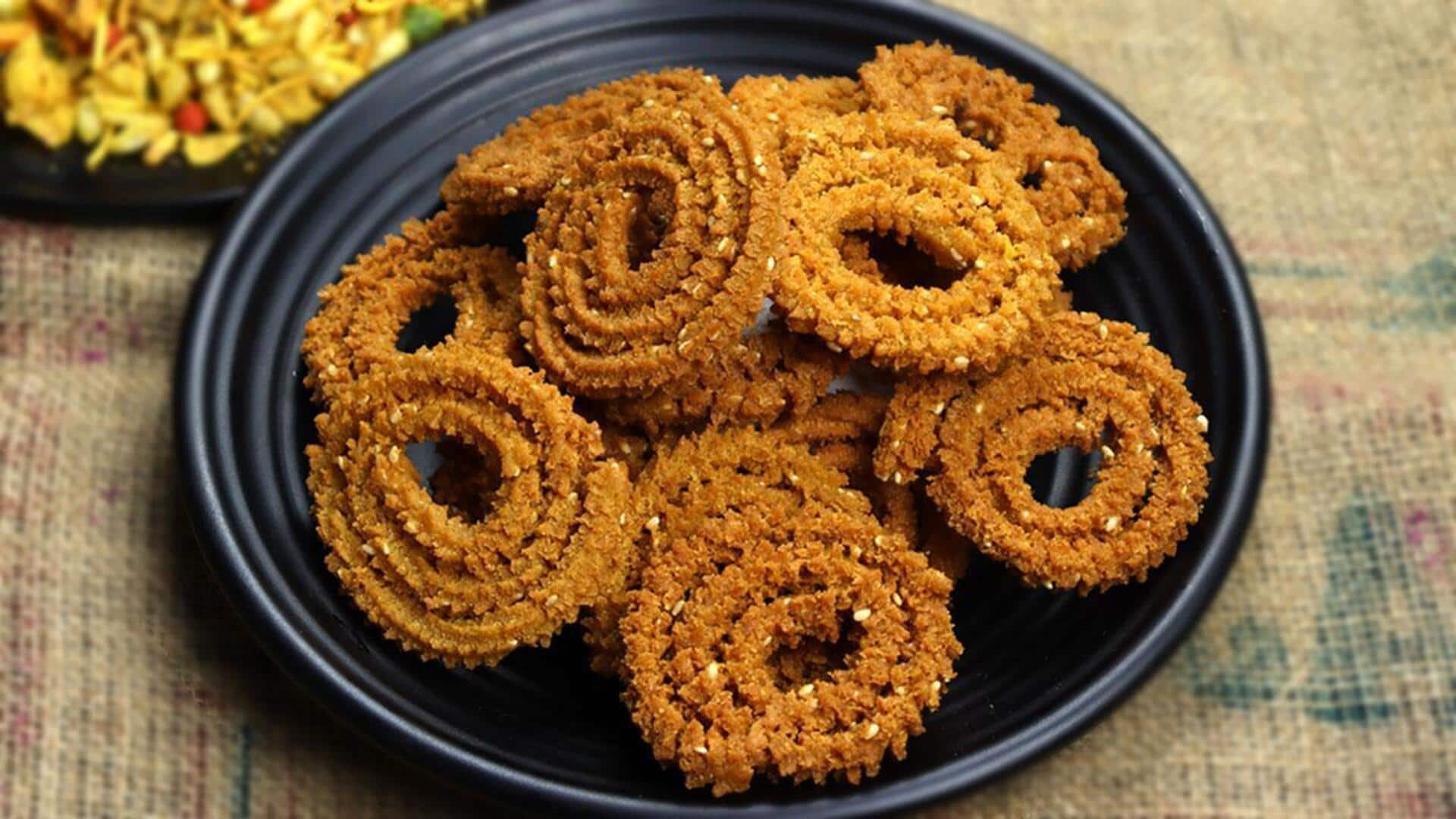
Chakli's journey: Origin, popularity, and more
What's the story
Chakli, a beloved snack from India, has a history that dates back centuries. This spiral-shaped, crunchy snack is a staple during festivals and family gatherings. Its journey from ancient kitchens to modern-day snack aisles is fascinating. Let's explore the origins, evolution, and cultural significance of chakli.
#1
Ancient origins of chakli
Chakli's origins can be traced back to ancient India, where it was prepared with locally sourced grains and spices. Traditionally, rice flour or gram flour was used as the base, mixed with sesame seeds and spices like cumin and turmeric. This simple yet flavorful combination made chakli a favorite among households. The method of preparation involved kneading the dough and shaping it into spirals before frying.
#2
Regional variations across India
As chakli traveled across India, it adapted to different regional tastes and ingredients. In Maharashtra, rice flour is the main ingredient, while Karnataka prefers a mix of rice and gram flour. In Gujarat, the dough is often spiced with ajwain or carom seeds for an extra kick. Each region has its own unique take on this classic snack, but the essence remains the same.
#3
Chakli's role in festivals
Chakli is a staple in Indian households during festivals like Diwali and Ganesh Chaturthi. Its crunchy texture makes it a perfect companion to sweets like ladoos or barfis. Families often prepare large batches to share with friends and relatives as a gesture of goodwill. The preparation process becomes a family affair, where everyone contributes their skills to create this beloved treat.
#4
Modern adaptations and global reach
In recent years, chakli has also undergone modern adaptations with the introduction of new flavors such as cheese or herbs like oregano or basil. These variations cater to changing consumer preferences while retaining traditional elements. Chakli is now available globally through online platforms, making it accessible beyond Indian borders.